-
EXECUTIVE SUMMARY
-
Market Overview
-
Key Findings
-
Market Segmentation
-
Competitive Landscape
-
Challenges and Opportunities
-
Future Outlook
-
MARKET INTRODUCTION
-
Definition
-
Scope of the study
- Research Objective
- Assumption
- Limitations
-
RESEARCH METHODOLOGY
-
Overview
-
Data Mining
-
Secondary Research
-
Primary Research
- Primary Interviews and Information Gathering Process
- Breakdown of Primary Respondents
-
Forecasting Model
-
Market Size Estimation
- Bottom-Up Approach
- Top-Down Approach
-
Data Triangulation
-
Validation
-
MARKET DYNAMICS
-
Overview
-
Drivers
-
Restraints
-
Opportunities
-
MARKET FACTOR ANALYSIS
-
Value chain Analysis
-
Porter's Five Forces Analysis
- Bargaining Power of Suppliers
- Bargaining Power of Buyers
- Threat of New Entrants
- Threat of Substitutes
- Intensity of Rivalry
-
COVID-19 Impact Analysis
- Market Impact Analysis
- Regional Impact
- Opportunity and Threat Analysis
-
ANTIMICROBIAL COATING MARKET, BY APPLICATION (USD BILLION)
-
Building Construction
-
Medical Devices
-
Food Packaging
-
Textiles
-
Electronics
-
ANTIMICROBIAL COATING MARKET, BY TYPE (USD BILLION)
-
Silver-based Coatings
-
Copper-based Coatings
-
Zinc-based Coatings
-
Polymeric Coatings
-
Ceramic Coatings
-
ANTIMICROBIAL COATING MARKET, BY END USE (USD BILLION)
-
Healthcare
-
Food Processing
-
Consumer Goods
-
Automotive
-
Aerospace
-
ANTIMICROBIAL COATING MARKET, BY FORMULATION (USD BILLION)
-
Water-based Coatings
-
Solvent-based Coatings
-
Powder-based Coatings
-
UV Curable Coatings
-
ANTIMICROBIAL COATING MARKET, BY REGIONAL (USD BILLION)
-
North America
- US
- Canada
-
Europe
- Germany
- UK
- France
- Russia
- Italy
- Spain
- Rest of Europe
-
APAC
- China
- India
- Japan
- South Korea
- Malaysia
- Thailand
- Indonesia
- Rest of APAC
-
South America
- Brazil
- Mexico
- Argentina
- Rest of South America
-
MEA
- GCC Countries
- South Africa
- Rest of MEA
-
COMPETITIVE LANDSCAPE
-
Overview
-
Competitive Analysis
-
Market share Analysis
-
Major Growth Strategy in the Antimicrobial Coating Market
-
Competitive Benchmarking
-
Leading Players in Terms of Number of Developments in the Antimicrobial Coating Market
-
Key developments and growth strategies
- New Product Launch/Service Deployment
- Merger Acquisitions
- Joint Ventures
-
Major Players Financial Matrix
- Sales and Operating Income
- Major Players RD Expenditure. 2023
-
COMPANY PROFILES
-
DuPont
- Financial Overview
- Products Offered
- Key Developments
- SWOT Analysis
- Key Strategies
-
Troy Corporation
- Financial Overview
- Products Offered
- Key Developments
- SWOT Analysis
- Key Strategies
-
Nippon Paint
- Financial Overview
- Products Offered
- Key Developments
- SWOT Analysis
- Key Strategies
-
Akzonobel
- Financial Overview
- Products Offered
- Key Developments
- SWOT Analysis
- Key Strategies
-
PPG Industries
- Financial Overview
- Products Offered
- Key Developments
- SWOT Analysis
- Key Strategies
-
Kriesa
- Financial Overview
- Products Offered
- Key Developments
- SWOT Analysis
- Key Strategies
-
SherwinWilliams
- Financial Overview
- Products Offered
- Key Developments
- SWOT Analysis
- Key Strategies
-
Covestro
- Financial Overview
- Products Offered
- Key Developments
- SWOT Analysis
- Key Strategies
-
Berkshire Hathaway
- Financial Overview
- Products Offered
- Key Developments
- SWOT Analysis
- Key Strategies
-
Dow
- Financial Overview
- Products Offered
- Key Developments
- SWOT Analysis
- Key Strategies
-
Microban International
- Financial Overview
- Products Offered
- Key Developments
- SWOT Analysis
- Key Strategies
-
BASF
- Financial Overview
- Products Offered
- Key Developments
- SWOT Analysis
- Key Strategies
-
Hempel
- Financial Overview
- Products Offered
- Key Developments
- SWOT Analysis
- Key Strategies
-
RPM International
- Financial Overview
- Products Offered
- Key Developments
- SWOT Analysis
- Key Strategies
-
APPENDIX
-
References
-
Related Reports
-
LIST OF TABLES
-
LIST OF ASSUMPTIONS
-
NORTH AMERICA ANTIMICROBIAL COATING MARKET SIZE ESTIMATES & FORECAST, BY APPLICATION, 2019-2035 (USD BILLIONS)
-
NORTH AMERICA ANTIMICROBIAL COATING MARKET SIZE ESTIMATES & FORECAST, BY TYPE, 2019-2035 (USD BILLIONS)
-
NORTH AMERICA ANTIMICROBIAL COATING MARKET SIZE ESTIMATES & FORECAST, BY END USE, 2019-2035 (USD BILLIONS)
-
NORTH AMERICA ANTIMICROBIAL COATING MARKET SIZE ESTIMATES & FORECAST, BY FORMULATION, 2019-2035 (USD BILLIONS)
-
NORTH AMERICA ANTIMICROBIAL COATING MARKET SIZE ESTIMATES & FORECAST, BY REGIONAL, 2019-2035 (USD BILLIONS)
-
US ANTIMICROBIAL COATING MARKET SIZE ESTIMATES & FORECAST, BY APPLICATION, 2019-2035 (USD BILLIONS)
-
US ANTIMICROBIAL COATING MARKET SIZE ESTIMATES & FORECAST, BY TYPE, 2019-2035 (USD BILLIONS)
-
US ANTIMICROBIAL COATING MARKET SIZE ESTIMATES & FORECAST, BY END USE, 2019-2035 (USD BILLIONS)
-
US ANTIMICROBIAL COATING MARKET SIZE ESTIMATES & FORECAST, BY FORMULATION, 2019-2035 (USD BILLIONS)
-
US ANTIMICROBIAL COATING MARKET SIZE ESTIMATES & FORECAST, BY REGIONAL, 2019-2035 (USD BILLIONS)
-
CANADA ANTIMICROBIAL COATING MARKET SIZE ESTIMATES & FORECAST, BY APPLICATION, 2019-2035 (USD BILLIONS)
-
CANADA ANTIMICROBIAL COATING MARKET SIZE ESTIMATES & FORECAST, BY TYPE, 2019-2035 (USD BILLIONS)
-
CANADA ANTIMICROBIAL COATING MARKET SIZE ESTIMATES & FORECAST, BY END USE, 2019-2035 (USD BILLIONS)
-
CANADA ANTIMICROBIAL COATING MARKET SIZE ESTIMATES & FORECAST, BY FORMULATION, 2019-2035 (USD BILLIONS)
-
CANADA ANTIMICROBIAL COATING MARKET SIZE ESTIMATES & FORECAST, BY REGIONAL, 2019-2035 (USD BILLIONS)
-
EUROPE ANTIMICROBIAL COATING MARKET SIZE ESTIMATES & FORECAST, BY APPLICATION, 2019-2035 (USD BILLIONS)
-
EUROPE ANTIMICROBIAL COATING MARKET SIZE ESTIMATES & FORECAST, BY TYPE, 2019-2035 (USD BILLIONS)
-
EUROPE ANTIMICROBIAL COATING MARKET SIZE ESTIMATES & FORECAST, BY END USE, 2019-2035 (USD BILLIONS)
-
EUROPE ANTIMICROBIAL COATING MARKET SIZE ESTIMATES & FORECAST, BY FORMULATION, 2019-2035 (USD BILLIONS)
-
EUROPE ANTIMICROBIAL COATING MARKET SIZE ESTIMATES & FORECAST, BY REGIONAL, 2019-2035 (USD BILLIONS)
-
GERMANY ANTIMICROBIAL COATING MARKET SIZE ESTIMATES & FORECAST, BY APPLICATION, 2019-2035 (USD BILLIONS)
-
GERMANY ANTIMICROBIAL COATING MARKET SIZE ESTIMATES & FORECAST, BY TYPE, 2019-2035 (USD BILLIONS)
-
GERMANY ANTIMICROBIAL COATING MARKET SIZE ESTIMATES & FORECAST, BY END USE, 2019-2035 (USD BILLIONS)
-
GERMANY ANTIMICROBIAL COATING MARKET SIZE ESTIMATES & FORECAST, BY FORMULATION, 2019-2035 (USD BILLIONS)
-
GERMANY ANTIMICROBIAL COATING MARKET SIZE ESTIMATES & FORECAST, BY REGIONAL, 2019-2035 (USD BILLIONS)
-
UK ANTIMICROBIAL COATING MARKET SIZE ESTIMATES & FORECAST, BY APPLICATION, 2019-2035 (USD BILLIONS)
-
UK ANTIMICROBIAL COATING MARKET SIZE ESTIMATES & FORECAST, BY TYPE, 2019-2035 (USD BILLIONS)
-
UK ANTIMICROBIAL COATING MARKET SIZE ESTIMATES & FORECAST, BY END USE, 2019-2035 (USD BILLIONS)
-
UK ANTIMICROBIAL COATING MARKET SIZE ESTIMATES & FORECAST, BY FORMULATION, 2019-2035 (USD BILLIONS)
-
UK ANTIMICROBIAL COATING MARKET SIZE ESTIMATES & FORECAST, BY REGIONAL, 2019-2035 (USD BILLIONS)
-
FRANCE ANTIMICROBIAL COATING MARKET SIZE ESTIMATES & FORECAST, BY APPLICATION, 2019-2035 (USD BILLIONS)
-
FRANCE ANTIMICROBIAL COATING MARKET SIZE ESTIMATES & FORECAST, BY TYPE, 2019-2035 (USD BILLIONS)
-
FRANCE ANTIMICROBIAL COATING MARKET SIZE ESTIMATES & FORECAST, BY END USE, 2019-2035 (USD BILLIONS)
-
FRANCE ANTIMICROBIAL COATING MARKET SIZE ESTIMATES & FORECAST, BY FORMULATION, 2019-2035 (USD BILLIONS)
-
FRANCE ANTIMICROBIAL COATING MARKET SIZE ESTIMATES & FORECAST, BY REGIONAL, 2019-2035 (USD BILLIONS)
-
RUSSIA ANTIMICROBIAL COATING MARKET SIZE ESTIMATES & FORECAST, BY APPLICATION, 2019-2035 (USD BILLIONS)
-
RUSSIA ANTIMICROBIAL COATING MARKET SIZE ESTIMATES & FORECAST, BY TYPE, 2019-2035 (USD BILLIONS)
-
RUSSIA ANTIMICROBIAL COATING MARKET SIZE ESTIMATES & FORECAST, BY END USE, 2019-2035 (USD BILLIONS)
-
RUSSIA ANTIMICROBIAL COATING MARKET SIZE ESTIMATES & FORECAST, BY FORMULATION, 2019-2035 (USD BILLIONS)
-
RUSSIA ANTIMICROBIAL COATING MARKET SIZE ESTIMATES & FORECAST, BY REGIONAL, 2019-2035 (USD BILLIONS)
-
ITALY ANTIMICROBIAL COATING MARKET SIZE ESTIMATES & FORECAST, BY APPLICATION, 2019-2035 (USD BILLIONS)
-
ITALY ANTIMICROBIAL COATING MARKET SIZE ESTIMATES & FORECAST, BY TYPE, 2019-2035 (USD BILLIONS)
-
ITALY ANTIMICROBIAL COATING MARKET SIZE ESTIMATES & FORECAST, BY END USE, 2019-2035 (USD BILLIONS)
-
ITALY ANTIMICROBIAL COATING MARKET SIZE ESTIMATES & FORECAST, BY FORMULATION, 2019-2035 (USD BILLIONS)
-
ITALY ANTIMICROBIAL COATING MARKET SIZE ESTIMATES & FORECAST, BY REGIONAL, 2019-2035 (USD BILLIONS)
-
SPAIN ANTIMICROBIAL COATING MARKET SIZE ESTIMATES & FORECAST, BY APPLICATION, 2019-2035 (USD BILLIONS)
-
SPAIN ANTIMICROBIAL COATING MARKET SIZE ESTIMATES & FORECAST, BY TYPE, 2019-2035 (USD BILLIONS)
-
SPAIN ANTIMICROBIAL COATING MARKET SIZE ESTIMATES & FORECAST, BY END USE, 2019-2035 (USD BILLIONS)
-
SPAIN ANTIMICROBIAL COATING MARKET SIZE ESTIMATES & FORECAST, BY FORMULATION, 2019-2035 (USD BILLIONS)
-
SPAIN ANTIMICROBIAL COATING MARKET SIZE ESTIMATES & FORECAST, BY REGIONAL, 2019-2035 (USD BILLIONS)
-
REST OF EUROPE ANTIMICROBIAL COATING MARKET SIZE ESTIMATES & FORECAST, BY APPLICATION, 2019-2035 (USD BILLIONS)
-
REST OF EUROPE ANTIMICROBIAL COATING MARKET SIZE ESTIMATES & FORECAST, BY TYPE, 2019-2035 (USD BILLIONS)
-
REST OF EUROPE ANTIMICROBIAL COATING MARKET SIZE ESTIMATES & FORECAST, BY END USE, 2019-2035 (USD BILLIONS)
-
REST OF EUROPE ANTIMICROBIAL COATING MARKET SIZE ESTIMATES & FORECAST, BY FORMULATION, 2019-2035 (USD BILLIONS)
-
REST OF EUROPE ANTIMICROBIAL COATING MARKET SIZE ESTIMATES & FORECAST, BY REGIONAL, 2019-2035 (USD BILLIONS)
-
APAC ANTIMICROBIAL COATING MARKET SIZE ESTIMATES & FORECAST, BY APPLICATION, 2019-2035 (USD BILLIONS)
-
APAC ANTIMICROBIAL COATING MARKET SIZE ESTIMATES & FORECAST, BY TYPE, 2019-2035 (USD BILLIONS)
-
APAC ANTIMICROBIAL COATING MARKET SIZE ESTIMATES & FORECAST, BY END USE, 2019-2035 (USD BILLIONS)
-
APAC ANTIMICROBIAL COATING MARKET SIZE ESTIMATES & FORECAST, BY FORMULATION, 2019-2035 (USD BILLIONS)
-
APAC ANTIMICROBIAL COATING MARKET SIZE ESTIMATES & FORECAST, BY REGIONAL, 2019-2035 (USD BILLIONS)
-
CHINA ANTIMICROBIAL COATING MARKET SIZE ESTIMATES & FORECAST, BY APPLICATION, 2019-2035 (USD BILLIONS)
-
CHINA ANTIMICROBIAL COATING MARKET SIZE ESTIMATES & FORECAST, BY TYPE, 2019-2035 (USD BILLIONS)
-
CHINA ANTIMICROBIAL COATING MARKET SIZE ESTIMATES & FORECAST, BY END USE, 2019-2035 (USD BILLIONS)
-
CHINA ANTIMICROBIAL COATING MARKET SIZE ESTIMATES & FORECAST, BY FORMULATION, 2019-2035 (USD BILLIONS)
-
CHINA ANTIMICROBIAL COATING MARKET SIZE ESTIMATES & FORECAST, BY REGIONAL, 2019-2035 (USD BILLIONS)
-
INDIA ANTIMICROBIAL COATING MARKET SIZE ESTIMATES & FORECAST, BY APPLICATION, 2019-2035 (USD BILLIONS)
-
INDIA ANTIMICROBIAL COATING MARKET SIZE ESTIMATES & FORECAST, BY TYPE, 2019-2035 (USD BILLIONS)
-
INDIA ANTIMICROBIAL COATING MARKET SIZE ESTIMATES & FORECAST, BY END USE, 2019-2035 (USD BILLIONS)
-
INDIA ANTIMICROBIAL COATING MARKET SIZE ESTIMATES & FORECAST, BY FORMULATION, 2019-2035 (USD BILLIONS)
-
INDIA ANTIMICROBIAL COATING MARKET SIZE ESTIMATES & FORECAST, BY REGIONAL, 2019-2035 (USD BILLIONS)
-
JAPAN ANTIMICROBIAL COATING MARKET SIZE ESTIMATES & FORECAST, BY APPLICATION, 2019-2035 (USD BILLIONS)
-
JAPAN ANTIMICROBIAL COATING MARKET SIZE ESTIMATES & FORECAST, BY TYPE, 2019-2035 (USD BILLIONS)
-
JAPAN ANTIMICROBIAL COATING MARKET SIZE ESTIMATES & FORECAST, BY END USE, 2019-2035 (USD BILLIONS)
-
JAPAN ANTIMICROBIAL COATING MARKET SIZE ESTIMATES & FORECAST, BY FORMULATION, 2019-2035 (USD BILLIONS)
-
JAPAN ANTIMICROBIAL COATING MARKET SIZE ESTIMATES & FORECAST, BY REGIONAL, 2019-2035 (USD BILLIONS)
-
SOUTH KOREA ANTIMICROBIAL COATING MARKET SIZE ESTIMATES & FORECAST, BY APPLICATION, 2019-2035 (USD BILLIONS)
-
SOUTH KOREA ANTIMICROBIAL COATING MARKET SIZE ESTIMATES & FORECAST, BY TYPE, 2019-2035 (USD BILLIONS)
-
SOUTH KOREA ANTIMICROBIAL COATING MARKET SIZE ESTIMATES & FORECAST, BY END USE, 2019-2035 (USD BILLIONS)
-
SOUTH KOREA ANTIMICROBIAL COATING MARKET SIZE ESTIMATES & FORECAST, BY FORMULATION, 2019-2035 (USD BILLIONS)
-
SOUTH KOREA ANTIMICROBIAL COATING MARKET SIZE ESTIMATES & FORECAST, BY REGIONAL, 2019-2035 (USD BILLIONS)
-
MALAYSIA ANTIMICROBIAL COATING MARKET SIZE ESTIMATES & FORECAST, BY APPLICATION, 2019-2035 (USD BILLIONS)
-
MALAYSIA ANTIMICROBIAL COATING MARKET SIZE ESTIMATES & FORECAST, BY TYPE, 2019-2035 (USD BILLIONS)
-
MALAYSIA ANTIMICROBIAL COATING MARKET SIZE ESTIMATES & FORECAST, BY END USE, 2019-2035 (USD BILLIONS)
-
MALAYSIA ANTIMICROBIAL COATING MARKET SIZE ESTIMATES & FORECAST, BY FORMULATION, 2019-2035 (USD BILLIONS)
-
MALAYSIA ANTIMICROBIAL COATING MARKET SIZE ESTIMATES & FORECAST, BY REGIONAL, 2019-2035 (USD BILLIONS)
-
THAILAND ANTIMICROBIAL COATING MARKET SIZE ESTIMATES & FORECAST, BY APPLICATION, 2019-2035 (USD BILLIONS)
-
THAILAND ANTIMICROBIAL COATING MARKET SIZE ESTIMATES & FORECAST, BY TYPE, 2019-2035 (USD BILLIONS)
-
THAILAND ANTIMICROBIAL COATING MARKET SIZE ESTIMATES & FORECAST, BY END USE, 2019-2035 (USD BILLIONS)
-
THAILAND ANTIMICROBIAL COATING MARKET SIZE ESTIMATES & FORECAST, BY FORMULATION, 2019-2035 (USD BILLIONS)
-
THAILAND ANTIMICROBIAL COATING MARKET SIZE ESTIMATES & FORECAST, BY REGIONAL, 2019-2035 (USD BILLIONS)
-
INDONESIA ANTIMICROBIAL COATING MARKET SIZE ESTIMATES & FORECAST, BY APPLICATION, 2019-2035 (USD BILLIONS)
-
INDONESIA ANTIMICROBIAL COATING MARKET SIZE ESTIMATES & FORECAST, BY TYPE, 2019-2035 (USD BILLIONS)
-
INDONESIA ANTIMICROBIAL COATING MARKET SIZE ESTIMATES & FORECAST, BY END USE, 2019-2035 (USD BILLIONS)
-
INDONESIA ANTIMICROBIAL COATING MARKET SIZE ESTIMATES & FORECAST, BY FORMULATION, 2019-2035 (USD BILLIONS)
-
INDONESIA ANTIMICROBIAL COATING MARKET SIZE ESTIMATES & FORECAST, BY REGIONAL, 2019-2035 (USD BILLIONS)
-
REST OF APAC ANTIMICROBIAL COATING MARKET SIZE ESTIMATES & FORECAST, BY APPLICATION, 2019-2035 (USD BILLIONS)
-
REST OF APAC ANTIMICROBIAL COATING MARKET SIZE ESTIMATES & FORECAST, BY TYPE, 2019-2035 (USD BILLIONS)
-
REST OF APAC ANTIMICROBIAL COATING MARKET SIZE ESTIMATES & FORECAST, BY END USE, 2019-2035 (USD BILLIONS)
-
REST OF APAC ANTIMICROBIAL COATING MARKET SIZE ESTIMATES & FORECAST, BY FORMULATION, 2019-2035 (USD BILLIONS)
-
REST OF APAC ANTIMICROBIAL COATING MARKET SIZE ESTIMATES & FORECAST, BY REGIONAL, 2019-2035 (USD BILLIONS)
-
SOUTH AMERICA ANTIMICROBIAL COATING MARKET SIZE ESTIMATES & FORECAST, BY APPLICATION, 2019-2035 (USD BILLIONS)
-
SOUTH AMERICA ANTIMICROBIAL COATING MARKET SIZE ESTIMATES & FORECAST, BY TYPE, 2019-2035 (USD BILLIONS)
-
SOUTH AMERICA ANTIMICROBIAL COATING MARKET SIZE ESTIMATES & FORECAST, BY END USE, 2019-2035 (USD BILLIONS)
-
SOUTH AMERICA ANTIMICROBIAL COATING MARKET SIZE ESTIMATES & FORECAST, BY FORMULATION, 2019-2035 (USD BILLIONS)
-
SOUTH AMERICA ANTIMICROBIAL COATING MARKET SIZE ESTIMATES & FORECAST, BY REGIONAL, 2019-2035 (USD BILLIONS)
-
BRAZIL ANTIMICROBIAL COATING MARKET SIZE ESTIMATES & FORECAST, BY APPLICATION, 2019-2035 (USD BILLIONS)
-
BRAZIL ANTIMICROBIAL COATING MARKET SIZE ESTIMATES & FORECAST, BY TYPE, 2019-2035 (USD BILLIONS)
-
BRAZIL ANTIMICROBIAL COATING MARKET SIZE ESTIMATES & FORECAST, BY END USE, 2019-2035 (USD BILLIONS)
-
BRAZIL ANTIMICROBIAL COATING MARKET SIZE ESTIMATES & FORECAST, BY FORMULATION, 2019-2035 (USD BILLIONS)
-
BRAZIL ANTIMICROBIAL COATING MARKET SIZE ESTIMATES & FORECAST, BY REGIONAL, 2019-2035 (USD BILLIONS)
-
MEXICO ANTIMICROBIAL COATING MARKET SIZE ESTIMATES & FORECAST, BY APPLICATION, 2019-2035 (USD BILLIONS)
-
MEXICO ANTIMICROBIAL COATING MARKET SIZE ESTIMATES & FORECAST, BY TYPE, 2019-2035 (USD BILLIONS)
-
MEXICO ANTIMICROBIAL COATING MARKET SIZE ESTIMATES & FORECAST, BY END USE, 2019-2035 (USD BILLIONS)
-
MEXICO ANTIMICROBIAL COATING MARKET SIZE ESTIMATES & FORECAST, BY FORMULATION, 2019-2035 (USD BILLIONS)
-
MEXICO ANTIMICROBIAL COATING MARKET SIZE ESTIMATES & FORECAST, BY REGIONAL, 2019-2035 (USD BILLIONS)
-
ARGENTINA ANTIMICROBIAL COATING MARKET SIZE ESTIMATES & FORECAST, BY APPLICATION, 2019-2035 (USD BILLIONS)
-
ARGENTINA ANTIMICROBIAL COATING MARKET SIZE ESTIMATES & FORECAST, BY TYPE, 2019-2035 (USD BILLIONS)
-
ARGENTINA ANTIMICROBIAL COATING MARKET SIZE ESTIMATES & FORECAST, BY END USE, 2019-2035 (USD BILLIONS)
-
ARGENTINA ANTIMICROBIAL COATING MARKET SIZE ESTIMATES & FORECAST, BY FORMULATION, 2019-2035 (USD BILLIONS)
-
ARGENTINA ANTIMICROBIAL COATING MARKET SIZE ESTIMATES & FORECAST, BY REGIONAL, 2019-2035 (USD BILLIONS)
-
REST OF SOUTH AMERICA ANTIMICROBIAL COATING MARKET SIZE ESTIMATES & FORECAST, BY APPLICATION, 2019-2035 (USD BILLIONS)
-
REST OF SOUTH AMERICA ANTIMICROBIAL COATING MARKET SIZE ESTIMATES & FORECAST, BY TYPE, 2019-2035 (USD BILLIONS)
-
REST OF SOUTH AMERICA ANTIMICROBIAL COATING MARKET SIZE ESTIMATES & FORECAST, BY END USE, 2019-2035 (USD BILLIONS)
-
REST OF SOUTH AMERICA ANTIMICROBIAL COATING MARKET SIZE ESTIMATES & FORECAST, BY FORMULATION, 2019-2035 (USD BILLIONS)
-
REST OF SOUTH AMERICA ANTIMICROBIAL COATING MARKET SIZE ESTIMATES & FORECAST, BY REGIONAL, 2019-2035 (USD BILLIONS)
-
MEA ANTIMICROBIAL COATING MARKET SIZE ESTIMATES & FORECAST, BY APPLICATION, 2019-2035 (USD BILLIONS)
-
MEA ANTIMICROBIAL COATING MARKET SIZE ESTIMATES & FORECAST, BY TYPE, 2019-2035 (USD BILLIONS)
-
MEA ANTIMICROBIAL COATING MARKET SIZE ESTIMATES & FORECAST, BY END USE, 2019-2035 (USD BILLIONS)
-
MEA ANTIMICROBIAL COATING MARKET SIZE ESTIMATES & FORECAST, BY FORMULATION, 2019-2035 (USD BILLIONS)
-
MEA ANTIMICROBIAL COATING MARKET SIZE ESTIMATES & FORECAST, BY REGIONAL, 2019-2035 (USD BILLIONS)
-
GCC COUNTRIES ANTIMICROBIAL COATING MARKET SIZE ESTIMATES & FORECAST, BY APPLICATION, 2019-2035 (USD BILLIONS)
-
GCC COUNTRIES ANTIMICROBIAL COATING MARKET SIZE ESTIMATES & FORECAST, BY TYPE, 2019-2035 (USD BILLIONS)
-
GCC COUNTRIES ANTIMICROBIAL COATING MARKET SIZE ESTIMATES & FORECAST, BY END USE, 2019-2035 (USD BILLIONS)
-
GCC COUNTRIES ANTIMICROBIAL COATING MARKET SIZE ESTIMATES & FORECAST, BY FORMULATION, 2019-2035 (USD BILLIONS)
-
GCC COUNTRIES ANTIMICROBIAL COATING MARKET SIZE ESTIMATES & FORECAST, BY REGIONAL, 2019-2035 (USD BILLIONS)
-
SOUTH AFRICA ANTIMICROBIAL COATING MARKET SIZE ESTIMATES & FORECAST, BY APPLICATION, 2019-2035 (USD BILLIONS)
-
SOUTH AFRICA ANTIMICROBIAL COATING MARKET SIZE ESTIMATES & FORECAST, BY TYPE, 2019-2035 (USD BILLIONS)
-
SOUTH AFRICA ANTIMICROBIAL COATING MARKET SIZE ESTIMATES & FORECAST, BY END USE, 2019-2035 (USD BILLIONS)
-
SOUTH AFRICA ANTIMICROBIAL COATING MARKET SIZE ESTIMATES & FORECAST, BY FORMULATION, 2019-2035 (USD BILLIONS)
-
SOUTH AFRICA ANTIMICROBIAL COATING MARKET SIZE ESTIMATES & FORECAST, BY REGIONAL, 2019-2035 (USD BILLIONS)
-
REST OF MEA ANTIMICROBIAL COATING MARKET SIZE ESTIMATES & FORECAST, BY APPLICATION, 2019-2035 (USD BILLIONS)
-
REST OF MEA ANTIMICROBIAL COATING MARKET SIZE ESTIMATES & FORECAST, BY TYPE, 2019-2035 (USD BILLIONS)
-
REST OF MEA ANTIMICROBIAL COATING MARKET SIZE ESTIMATES & FORECAST, BY END USE, 2019-2035 (USD BILLIONS)
-
REST OF MEA ANTIMICROBIAL COATING MARKET SIZE ESTIMATES & FORECAST, BY FORMULATION, 2019-2035 (USD BILLIONS)
-
REST OF MEA ANTIMICROBIAL COATING MARKET SIZE ESTIMATES & FORECAST, BY REGIONAL, 2019-2035 (USD BILLIONS)
-
PRODUCT LAUNCH/PRODUCT DEVELOPMENT/APPROVAL
-
ACQUISITION/PARTNERSHIP
-
LIST OF FIGURES
-
MARKET SYNOPSIS
-
NORTH AMERICA ANTIMICROBIAL COATING MARKET ANALYSIS
-
US ANTIMICROBIAL COATING MARKET ANALYSIS BY APPLICATION
-
US ANTIMICROBIAL COATING MARKET ANALYSIS BY TYPE
-
US ANTIMICROBIAL COATING MARKET ANALYSIS BY END USE
-
US ANTIMICROBIAL COATING MARKET ANALYSIS BY FORMULATION
-
US ANTIMICROBIAL COATING MARKET ANALYSIS BY REGIONAL
-
CANADA ANTIMICROBIAL COATING MARKET ANALYSIS BY APPLICATION
-
CANADA ANTIMICROBIAL COATING MARKET ANALYSIS BY TYPE
-
CANADA ANTIMICROBIAL COATING MARKET ANALYSIS BY END USE
-
CANADA ANTIMICROBIAL COATING MARKET ANALYSIS BY FORMULATION
-
CANADA ANTIMICROBIAL COATING MARKET ANALYSIS BY REGIONAL
-
EUROPE ANTIMICROBIAL COATING MARKET ANALYSIS
-
GERMANY ANTIMICROBIAL COATING MARKET ANALYSIS BY APPLICATION
-
GERMANY ANTIMICROBIAL COATING MARKET ANALYSIS BY TYPE
-
GERMANY ANTIMICROBIAL COATING MARKET ANALYSIS BY END USE
-
GERMANY ANTIMICROBIAL COATING MARKET ANALYSIS BY FORMULATION
-
GERMANY ANTIMICROBIAL COATING MARKET ANALYSIS BY REGIONAL
-
UK ANTIMICROBIAL COATING MARKET ANALYSIS BY APPLICATION
-
UK ANTIMICROBIAL COATING MARKET ANALYSIS BY TYPE
-
UK ANTIMICROBIAL COATING MARKET ANALYSIS BY END USE
-
UK ANTIMICROBIAL COATING MARKET ANALYSIS BY FORMULATION
-
UK ANTIMICROBIAL COATING MARKET ANALYSIS BY REGIONAL
-
FRANCE ANTIMICROBIAL COATING MARKET ANALYSIS BY APPLICATION
-
FRANCE ANTIMICROBIAL COATING MARKET ANALYSIS BY TYPE
-
FRANCE ANTIMICROBIAL COATING MARKET ANALYSIS BY END USE
-
FRANCE ANTIMICROBIAL COATING MARKET ANALYSIS BY FORMULATION
-
FRANCE ANTIMICROBIAL COATING MARKET ANALYSIS BY REGIONAL
-
RUSSIA ANTIMICROBIAL COATING MARKET ANALYSIS BY APPLICATION
-
RUSSIA ANTIMICROBIAL COATING MARKET ANALYSIS BY TYPE
-
RUSSIA ANTIMICROBIAL COATING MARKET ANALYSIS BY END USE
-
RUSSIA ANTIMICROBIAL COATING MARKET ANALYSIS BY FORMULATION
-
RUSSIA ANTIMICROBIAL COATING MARKET ANALYSIS BY REGIONAL
-
ITALY ANTIMICROBIAL COATING MARKET ANALYSIS BY APPLICATION
-
ITALY ANTIMICROBIAL COATING MARKET ANALYSIS BY TYPE
-
ITALY ANTIMICROBIAL COATING MARKET ANALYSIS BY END USE
-
ITALY ANTIMICROBIAL COATING MARKET ANALYSIS BY FORMULATION
-
ITALY ANTIMICROBIAL COATING MARKET ANALYSIS BY REGIONAL
-
SPAIN ANTIMICROBIAL COATING MARKET ANALYSIS BY APPLICATION
-
SPAIN ANTIMICROBIAL COATING MARKET ANALYSIS BY TYPE
-
SPAIN ANTIMICROBIAL COATING MARKET ANALYSIS BY END USE
-
SPAIN ANTIMICROBIAL COATING MARKET ANALYSIS BY FORMULATION
-
SPAIN ANTIMICROBIAL COATING MARKET ANALYSIS BY REGIONAL
-
REST OF EUROPE ANTIMICROBIAL COATING MARKET ANALYSIS BY APPLICATION
-
REST OF EUROPE ANTIMICROBIAL COATING MARKET ANALYSIS BY TYPE
-
REST OF EUROPE ANTIMICROBIAL COATING MARKET ANALYSIS BY END USE
-
REST OF EUROPE ANTIMICROBIAL COATING MARKET ANALYSIS BY FORMULATION
-
REST OF EUROPE ANTIMICROBIAL COATING MARKET ANALYSIS BY REGIONAL
-
APAC ANTIMICROBIAL COATING MARKET ANALYSIS
-
CHINA ANTIMICROBIAL COATING MARKET ANALYSIS BY APPLICATION
-
CHINA ANTIMICROBIAL COATING MARKET ANALYSIS BY TYPE
-
CHINA ANTIMICROBIAL COATING MARKET ANALYSIS BY END USE
-
CHINA ANTIMICROBIAL COATING MARKET ANALYSIS BY FORMULATION
-
CHINA ANTIMICROBIAL COATING MARKET ANALYSIS BY REGIONAL
-
INDIA ANTIMICROBIAL COATING MARKET ANALYSIS BY APPLICATION
-
INDIA ANTIMICROBIAL COATING MARKET ANALYSIS BY TYPE
-
INDIA ANTIMICROBIAL COATING MARKET ANALYSIS BY END USE
-
INDIA ANTIMICROBIAL COATING MARKET ANALYSIS BY FORMULATION
-
INDIA ANTIMICROBIAL COATING MARKET ANALYSIS BY REGIONAL
-
JAPAN ANTIMICROBIAL COATING MARKET ANALYSIS BY APPLICATION
-
JAPAN ANTIMICROBIAL COATING MARKET ANALYSIS BY TYPE
-
JAPAN ANTIMICROBIAL COATING MARKET ANALYSIS BY END USE
-
JAPAN ANTIMICROBIAL COATING MARKET ANALYSIS BY FORMULATION
-
JAPAN ANTIMICROBIAL COATING MARKET ANALYSIS BY REGIONAL
-
SOUTH KOREA ANTIMICROBIAL COATING MARKET ANALYSIS BY APPLICATION
-
SOUTH KOREA ANTIMICROBIAL COATING MARKET ANALYSIS BY TYPE
-
SOUTH KOREA ANTIMICROBIAL COATING MARKET ANALYSIS BY END USE
-
SOUTH KOREA ANTIMICROBIAL COATING MARKET ANALYSIS BY FORMULATION
-
SOUTH KOREA ANTIMICROBIAL COATING MARKET ANALYSIS BY REGIONAL
-
MALAYSIA ANTIMICROBIAL COATING MARKET ANALYSIS BY APPLICATION
-
MALAYSIA ANTIMICROBIAL COATING MARKET ANALYSIS BY TYPE
-
MALAYSIA ANTIMICROBIAL COATING MARKET ANALYSIS BY END USE
-
MALAYSIA ANTIMICROBIAL COATING MARKET ANALYSIS BY FORMULATION
-
MALAYSIA ANTIMICROBIAL COATING MARKET ANALYSIS BY REGIONAL
-
THAILAND ANTIMICROBIAL COATING MARKET ANALYSIS BY APPLICATION
-
THAILAND ANTIMICROBIAL COATING MARKET ANALYSIS BY TYPE
-
THAILAND ANTIMICROBIAL COATING MARKET ANALYSIS BY END USE
-
THAILAND ANTIMICROBIAL COATING MARKET ANALYSIS BY FORMULATION
-
THAILAND ANTIMICROBIAL COATING MARKET ANALYSIS BY REGIONAL
-
INDONESIA ANTIMICROBIAL COATING MARKET ANALYSIS BY APPLICATION
-
INDONESIA ANTIMICROBIAL COATING MARKET ANALYSIS BY TYPE
-
INDONESIA ANTIMICROBIAL COATING MARKET ANALYSIS BY END USE
-
INDONESIA ANTIMICROBIAL COATING MARKET ANALYSIS BY FORMULATION
-
INDONESIA ANTIMICROBIAL COATING MARKET ANALYSIS BY REGIONAL
-
REST OF APAC ANTIMICROBIAL COATING MARKET ANALYSIS BY APPLICATION
-
REST OF APAC ANTIMICROBIAL COATING MARKET ANALYSIS BY TYPE
-
REST OF APAC ANTIMICROBIAL COATING MARKET ANALYSIS BY END USE
-
REST OF APAC ANTIMICROBIAL COATING MARKET ANALYSIS BY FORMULATION
-
REST OF APAC ANTIMICROBIAL COATING MARKET ANALYSIS BY REGIONAL
-
SOUTH AMERICA ANTIMICROBIAL COATING MARKET ANALYSIS
-
BRAZIL ANTIMICROBIAL COATING MARKET ANALYSIS BY APPLICATION
-
BRAZIL ANTIMICROBIAL COATING MARKET ANALYSIS BY TYPE
-
BRAZIL ANTIMICROBIAL COATING MARKET ANALYSIS BY END USE
-
BRAZIL ANTIMICROBIAL COATING MARKET ANALYSIS BY FORMULATION
-
BRAZIL ANTIMICROBIAL COATING MARKET ANALYSIS BY REGIONAL
-
MEXICO ANTIMICROBIAL COATING MARKET ANALYSIS BY APPLICATION
-
MEXICO ANTIMICROBIAL COATING MARKET ANALYSIS BY TYPE
-
MEXICO ANTIMICROBIAL COATING MARKET ANALYSIS BY END USE
-
MEXICO ANTIMICROBIAL COATING MARKET ANALYSIS BY FORMULATION
-
MEXICO ANTIMICROBIAL COATING MARKET ANALYSIS BY REGIONAL
-
ARGENTINA ANTIMICROBIAL COATING MARKET ANALYSIS BY APPLICATION
-
ARGENTINA ANTIMICROBIAL COATING MARKET ANALYSIS BY TYPE
-
ARGENTINA ANTIMICROBIAL COATING MARKET ANALYSIS BY END USE
-
ARGENTINA ANTIMICROBIAL COATING MARKET ANALYSIS BY FORMULATION
-
ARGENTINA ANTIMICROBIAL COATING MARKET ANALYSIS BY REGIONAL
-
REST OF SOUTH AMERICA ANTIMICROBIAL COATING MARKET ANALYSIS BY APPLICATION
-
REST OF SOUTH AMERICA ANTIMICROBIAL COATING MARKET ANALYSIS BY TYPE
-
REST OF SOUTH AMERICA ANTIMICROBIAL COATING MARKET ANALYSIS BY END USE
-
REST OF SOUTH AMERICA ANTIMICROBIAL COATING MARKET ANALYSIS BY FORMULATION
-
REST OF SOUTH AMERICA ANTIMICROBIAL COATING MARKET ANALYSIS BY REGIONAL
-
MEA ANTIMICROBIAL COATING MARKET ANALYSIS
-
GCC COUNTRIES ANTIMICROBIAL COATING MARKET ANALYSIS BY APPLICATION
-
GCC COUNTRIES ANTIMICROBIAL COATING MARKET ANALYSIS BY TYPE
-
GCC COUNTRIES ANTIMICROBIAL COATING MARKET ANALYSIS BY END USE
-
GCC COUNTRIES ANTIMICROBIAL COATING MARKET ANALYSIS BY FORMULATION
-
GCC COUNTRIES ANTIMICROBIAL COATING MARKET ANALYSIS BY REGIONAL
-
SOUTH AFRICA ANTIMICROBIAL COATING MARKET ANALYSIS BY APPLICATION
-
SOUTH AFRICA ANTIMICROBIAL COATING MARKET ANALYSIS BY TYPE
-
SOUTH AFRICA ANTIMICROBIAL COATING MARKET ANALYSIS BY END USE
-
SOUTH AFRICA ANTIMICROBIAL COATING MARKET ANALYSIS BY FORMULATION
-
SOUTH AFRICA ANTIMICROBIAL COATING MARKET ANALYSIS BY REGIONAL
-
REST OF MEA ANTIMICROBIAL COATING MARKET ANALYSIS BY APPLICATION
-
REST OF MEA ANTIMICROBIAL COATING MARKET ANALYSIS BY TYPE
-
REST OF MEA ANTIMICROBIAL COATING MARKET ANALYSIS BY END USE
-
REST OF MEA ANTIMICROBIAL COATING MARKET ANALYSIS BY FORMULATION
-
REST OF MEA ANTIMICROBIAL COATING MARKET ANALYSIS BY REGIONAL
-
KEY BUYING CRITERIA OF ANTIMICROBIAL COATING MARKET
-
RESEARCH PROCESS OF MRFR
-
DRO ANALYSIS OF ANTIMICROBIAL COATING MARKET
-
DRIVERS IMPACT ANALYSIS: ANTIMICROBIAL COATING MARKET
-
RESTRAINTS IMPACT ANALYSIS: ANTIMICROBIAL COATING MARKET
-
SUPPLY / VALUE CHAIN: ANTIMICROBIAL COATING MARKET
-
ANTIMICROBIAL COATING MARKET, BY APPLICATION, 2025 (% SHARE)
-
ANTIMICROBIAL COATING MARKET, BY APPLICATION, 2019 TO 2035 (USD Billions)
-
ANTIMICROBIAL COATING MARKET, BY TYPE, 2025 (% SHARE)
-
ANTIMICROBIAL COATING MARKET, BY TYPE, 2019 TO 2035 (USD Billions)
-
ANTIMICROBIAL COATING MARKET, BY END USE, 2025 (% SHARE)
-
ANTIMICROBIAL COATING MARKET, BY END USE, 2019 TO 2035 (USD Billions)
-
ANTIMICROBIAL COATING MARKET, BY FORMULATION, 2025 (% SHARE)
-
ANTIMICROBIAL COATING MARKET, BY FORMULATION, 2019 TO 2035 (USD Billions)
-
ANTIMICROBIAL COATING MARKET, BY REGIONAL, 2025 (% SHARE)
-
ANTIMICROBIAL COATING MARKET, BY REGIONAL, 2019 TO 2035 (USD Billions)
-
BENCHMARKING OF MAJOR COMPETITORS
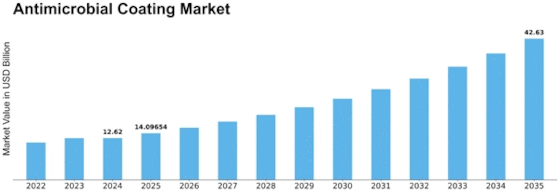

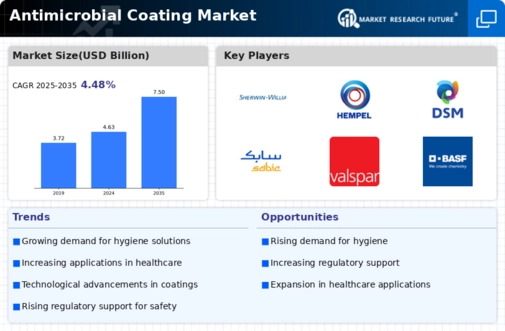
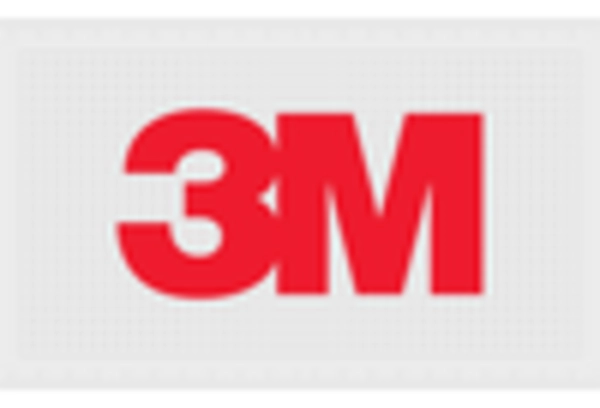
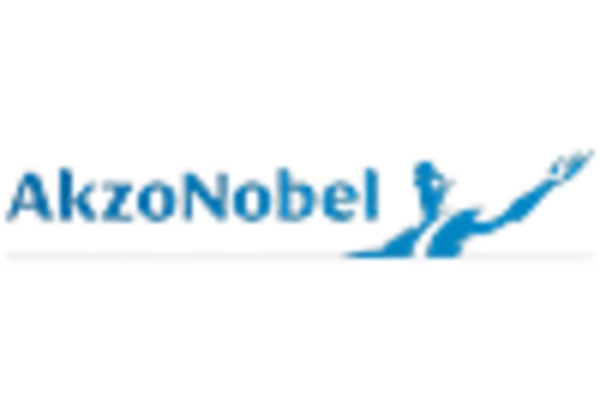

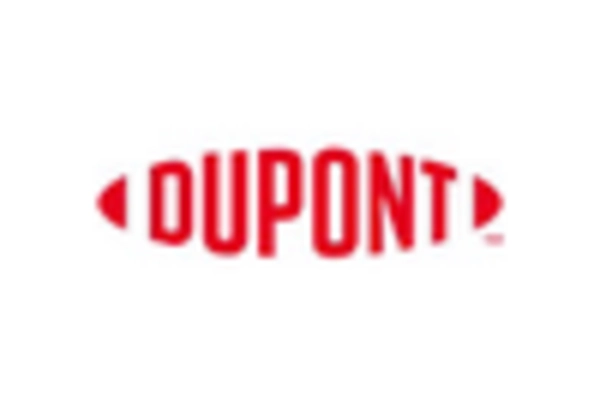
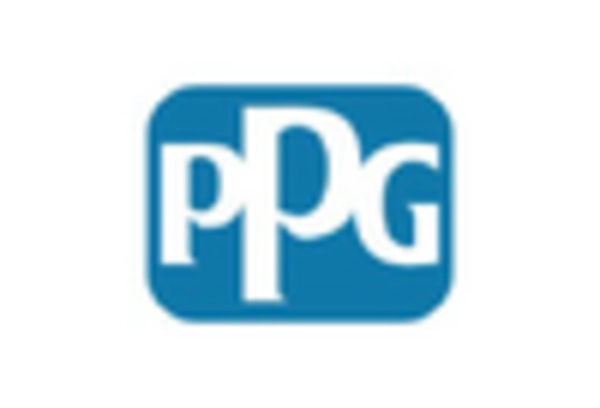
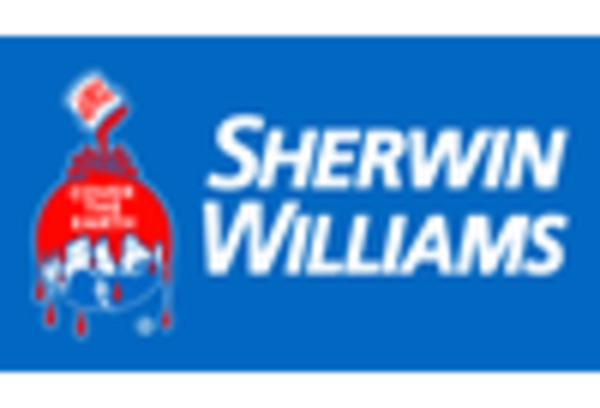









Leave a Comment